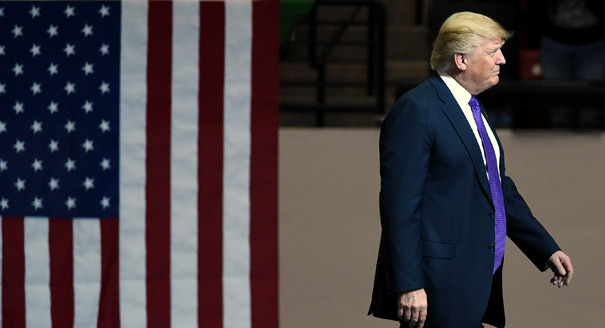Source: China Leadership Monitor
In December 2017 and January 2018, the executive branch of the United States Government published two important documents that purport to describe the main features and rationale for America’s overall security stance toward the world: the National Security Strategy (NSS) and the Summary of the National Defense Strategy (NDS), respectively.1 The former is designed to provide the basis for developing a common view across the government of the United States’ strategic environment and key global interests, goals, and objectives essential to its security. The latter, derived from the NSS, is intended to focus on: defining and prioritizing the specific threats confronting the United States; delineating a national military strategy intended to meet those threats; and providing a description of the specific goals, concepts, and resources necessary for the successful implementation of that strategy.2
These two documents deal extensively with China. Indeed, in the NSS, “China is mentioned 23 times, nearly twice as many times as it was in the Obama administration’s last report.”3
In both documents, Beijing is apparently seen as a near-existential threat to the United States and the West in general, engaged in a concerted effort to realize a “repressive vision of world order” by overthrowing the long-standing “free” vision of world order led by Washington. Unlike their predecessors, the strategies entirely “neglect to portray China as a potential contributor to regional or global stability and prosperity, or as a possible collaborator on common global and regional security (and other) problems.”4 Instead, they “seek to pit the United States and other democracies against China in a zero-sum competition” for dominance.5
These documents thus represent a fundamental shift in U.S. national security and defense priorities away from the post–9/11 focus on terrorism and other transnational threats that require cooperation with China—such as climate change, pandemics, and WMD proliferation—and toward a traditional emphasis on great power rivalry and the threat of a rising China.
Many observers point out that neither the NSS nor the NDS actually serves as an authoritative guide for concrete policies and behavior across the U.S. government. For many, they have become largely rhetorical exercises, marked, at least in the case of the NSS, by “grandiose ambitions and laundry lists of priorities.”6
Nonetheless, both documents unquestionably serve to set a tone and orientation for the executive and legislative branches in dealing with key foreign and defense policy concerns. As a consequence, they can reinforce existing biases or preferences within the U.S. government and policy community, thereby narrowing the range of options considered while squelching or ignoring criticisms of existing policies. In addition, there is little doubt that the NDS provides considerable impetus behind efforts to focus and reorient national resources in particular directions, in this instance investing less in capabilities intended to deal with non-state threats and more in conventional components of military force, such as warships and aircraft.
As one might expect, these documents have generated considerable, and almost uniformly critical, reactions from Chinese sources, with some interesting variations. As in past issues of the Monitor, this essay will describe and assess these Chinese views as comprehensively as possible using open sources. As usual, such views are divided into authoritative and non-authoritative categories to distinguish between official and unofficial perceptions, and to identify possible differences and lines of debate within both official and unofficial leadership and elite circles.7 The essay ends with a summary and assessment of the Chinese perspective and its implications for future U.S.-China relations.
This article will be published by China Leadership Monitor.
NOTES
1 National Security Strategy of the United States of America (Washington, DC: The White House, 2017), https://www.whitehouse.gov/wp-content/uploads/2017/12/NSS-Final-12-18-2017-0905.pdf and Summary of the 2018 National Defense Strategy of the United States of America: Sharpening the American Military’s Competitive Edge (Washington, DC: Office of the Secretary of Defense, 2018), https://www.defense.gov/Portals/1/Documents/pubs/2018-National-Defense-Strategy-Summary.pdf.
2 Although the reports are supposed to be produced on an annual and semi-annual basis, respectively, they are sometimes produced late or not at all.
3 Rob Schmitz quoted in Scott Neuman, “Trump’s National Security Strategy Angers China,” NPR, December 19, 2017, https://www.npr.org/sections/thetwo-way/2017/12/19/571873355/trumps-national-security-strategy-angers-china.
4 Ibid.
5 Ibid.
6 Rebecca Friedman Lissner, “The National Security Strategy Is Not a Strategy,” Foreign Affairs Snapshot, December 19, 2017, at https://www.foreignaffairs.com/articles/united-states/2017-12-19/national-security-strategy-not-strategy.
7 Several types of PRC sources are considered authoritative in the sense of explicitly “speaking for the regime.” Authoritative statements include, in descending order of authority, PRC government and CCP statements, Ministry of Foreign Affairs (MFA) statements, MFA spokesperson statements, and MFA daily press briefings. Many types of low-level commentary and signed articles appearing in a wide variety of PRC and Hong Kong media convey notable yet decidedly non-authoritative views. Such articles appear in the PRC government news service (Xinhua), CCP and PLA newspapers, the Hong Kong–based (and People’s Daily–owned) Global Times (环球时报), and many minor PRC and Hong Kong newspapers and academic publications. See Michael D. Swaine, “Chinese Views and Commentary on Periphery Diplomacy,” China Leadership Monitor, no. 44 (Summer 2014), p. 28. Several types of usually homophonous, bylined articles appearing in People’s Daily are considered non-authoritative. A major example of this is articles using the byline “Zhong Sheng” (钟声). See Michael D. Swaine, “Chinese Views on the South China Sea Arbitration Case between the People’s Republic of China and the Philippines,” China Leadership Monitor, no. 51 (Fall 2016), p. 2.





